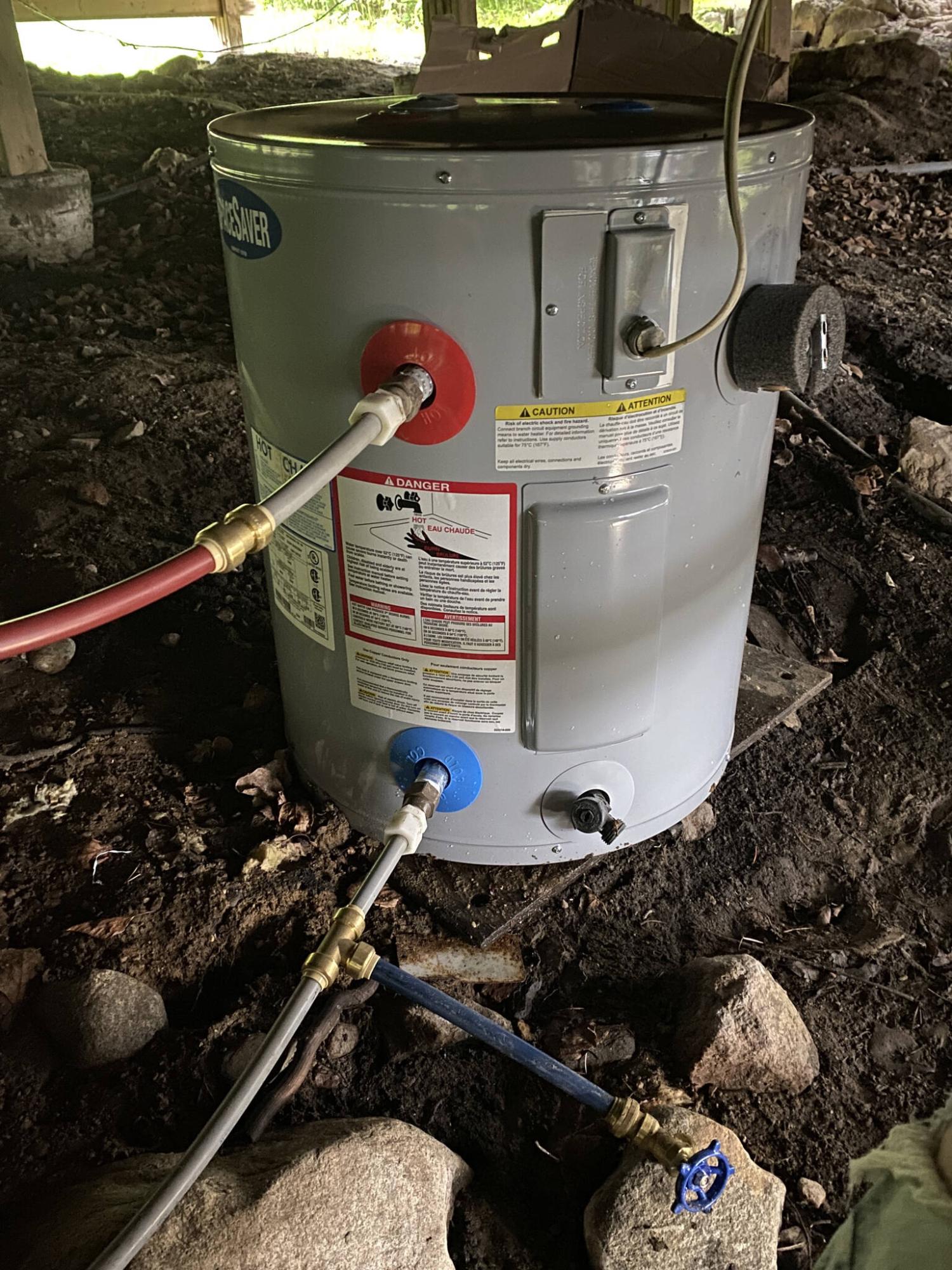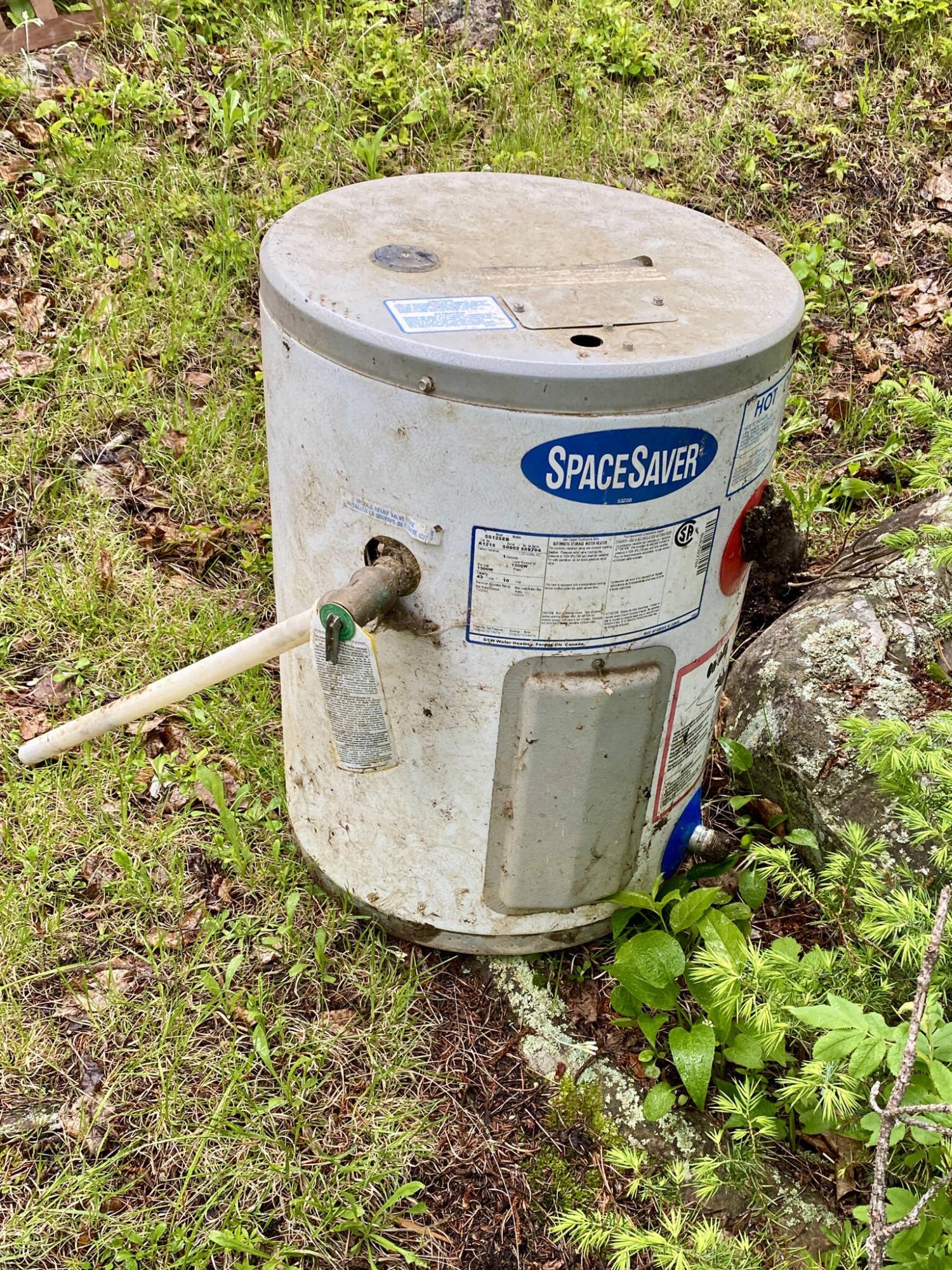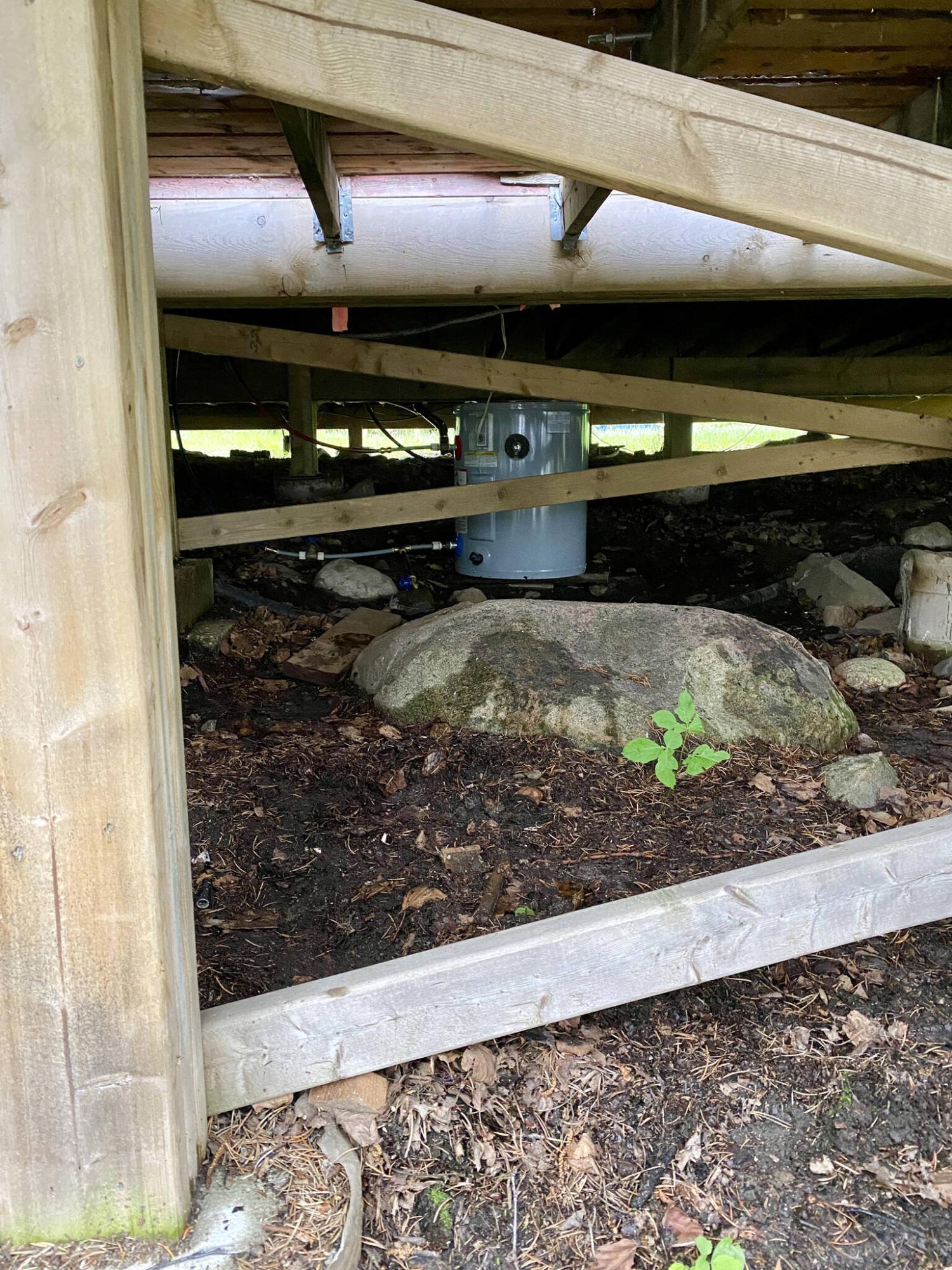
Photos by Marc LaBossiere / Free Press
The new 17-gallon SpaceSaver brand electric hot-water tank provides nearly double the hot water volume of the old tank, with the same electrical and water tie-ins for an easy installation.

The old 10-gallon SpaceSaver electric hot-water tank had succumbed to years of use, and began to leak from within the tank.

Unable to maneuver the new tank from the front, it was carefully introduced below from the backside of the cottage, and set into position atop the existing platform.
The running joke that has perpetuated my existence as a renovator has been inadvertently sustained by my roster of clients, throughout the years. No matter the circumstance, and in one form or another, it seems a homeowner cannot resist the desire to inquire about another unrelated matter in the presence of a contractor. So much so, that I can usually predict the moment it will occur and utter the words as they’re being said – “hey, while you’re here…”
While planning a multi-day stay at a boat-access only cottage that involved a kitchen facelift, which basically entailed the replacement of cupboard doors and drawer fronts, no sooner had the particulars been established that the cottage owner revealed that his electric hot-water tank had begun to fail so severely, that hot water at the cottage had become scarce commodity – there was an apparent leak from the tank itself. And before the client could continue (because I had a feeling I knew where the conversation was headed), I mentioned to him that as long as he could obtain and ensure a new hot-water tank was on property before I arrived, the appropriate amount of time could be allocated to replace the failed tank, “while I was there”. It actually felt good to beat a client to the verbal punch, this time.
After searching online for a while, it became clear that the size and power consumption of the old hot-water tank was less common than expected. Although the cottage owner had indicated that the old 10-gallon tank had always been slightly under-sized to satisfy the daily hot water requirements, and that a slight size upgrade would be beneficial, the 40 and 60-gallon options would not fit below the cottage, where the old one had been for decades. Although re-positioning the new tank was possible, it would not be a project that could be tackled within the allotted time given my limited stay, and without the necessary supplies and plumbing gear. Moreover, the existing tank ran at 110v, not 240v as do the larger capacity units. No matter, the client was determined to locate a hot-water tank that was only slightly larger than the existing to satisfy the desired hot water volume increase, while remaining small enough to fit within the constraints of height below the cottage at the existing tie-in location.
As luck would have it, a local distributor near cottage country not only supplied the same brand 110v hot-water tank that needed replacing, but it was also available in the sought-after size upgrade. At 17 gallons capacity, the cottage could now enjoy a seven-gallon hot water surplus, which will clearly make a huge difference on a daily basis.
Once the new tank was removed from the packaging, we determined it would not fit through the underside supports along the close side of the cottage. As such, it was pulled in from the back, while carefully moving it along the uneven ground using the opened box as a slide to glide it towards the tie-in location. To disengage the old tank, the power to the old tank was disabled by shutting of the breaker to the unit. The water pump was temporarily disabled, as well. Because the brass fittings had fused slightly to the threaded inlet and outlet of the old tank, a few squirts of WD-40 loosened them up. Within a few minutes, the water feeds were easily dismounted. The electrical feed was then disconnected, and the old unit was extricated from the area.
With the new hot-water tank now seeded atop the existing platform, the electrical feed was attached. The cold-water supply line was then secured to the cold-inlet of the new unit using the existing fittings, ensuring a tight fit along the threads using Teflon tape. The hot-water line was then connected to the hot-outlet in the same fashion. The water pump was re-engaged, and the breaker to the new tank was turned on. As the tank filled, I made sure there were no visible leaks at any junction. With the installation of the new hot-water tank completed, we waited roughly half an hour before testing the proficiency of heating and of course, the hot-water tap was indeed hot — success!
I’ve always known why homeowners take full advantage of a contractor’s presence, by asking a plethora of questions regarding a slew of additional issues – it only makes sense to get as much out of a visit as possible. And I’m more than happy to oblige, because an impromptu discussion can often preempt a major issue, or in the very least put someone’s mind at ease. At a boat-access only cottage however, “while you’re here” opportunities are fewer and far between. I suppose the old hot-water tank had a feeling I was coming out, and decided to call it quits so I could tackle the tank replacement “while I was there”. Oh, and the cottage kitchen facelift was a success, as well!
This is Reno Boss column number 400. Thanks for your continued interest, back at ya next Saturday!
RenoBoss.Inc@outlook.com



